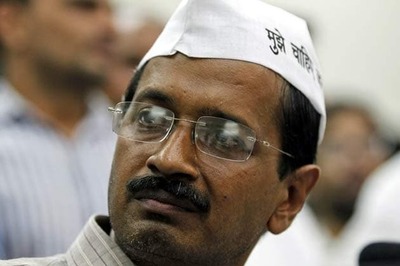
views
Uttar Pradesh, the most populous state in India is all set to launch the new population policy 2021-2030 on Sunday, which is observed as World Population Day. Via the new policy, efforts will be made to increase the accessibility of contraceptive measures issued under the Family Planning Programme and provide a proper system for safe abortions.
The draft law has been prepared by the Uttar Pradesh Health Department based on the findings of the National Family Health Survey-4.
One of the key points in the new policy is also to make comprehensive arrangements for the care of the elderly, apart from better management of education, health, and nutrition of adolescents between 11 and 19 years.
What is the new policy?
The draft law lists out a list of incentives and disincentives for the promotion of the two-child norm in the state.
The incentives would be extended to anyone who adopts the two-child norm by undergoing voluntary sterilization operation upon himself or spouse. This will include a soft loan for construction or purchasing a house at nominal rates of interest and a rebate on charges for utilities such as water, electricity, and house tax.
The draft law also states that whosoever is in contravention of the two-child norm after the commencement of the Act shall be debarred from the benefit of all government-sponsored welfare schemes, cannot contest election to local bodies, shall be ineligible to apply for government jobs under the state government, cannot get a promotion in a government job, his or her ration card would be limited to four members, and he or she shall be ineligible to receive any kind of government subsidy.
When will the law be enforced?
The new law shall come into force after one year from the date of publication in the Gazette. Reportedly, the law will first invite public suggestions which will be revisited by the law commission, and if any changes are made it will again be put in the public domain.
Why is the new policy being implemented?
UP chief minister Yogi Adityanath said that along with awareness and better health facilities, all necessary efforts should be made for population stabilisation. He said that while preparing the new population policy, efforts should be made to maintain the demographic balance in all the communities, easy availability of advanced health facilities, and to bring down the maternal and child mortality rate to the minimum level through proper nutrition.
The objectives of the new policy should be embedded in the spirit of the Sustainable Development Goals. In this, targets have been set on different parameters in two phases for 2026 and 2030.
Which other states are implementing the two-child norm?
Apart from UP, the Assam government may bring new two-child legislation during next month’s budget session of the state assembly to enforce it widely. The law could make only those with up to two children eligible for government jobs and welfare schemes, official sources have said.
What is the controversy surrounding the law?
The law has been termed as a conspiracy around Muslims by the Samajwadi Party MLA from Sambhal Iqbal Mehmood. “It is actually an attack on Muslims in the garb of population control,” Mehmood told PTI.
The law also impacts the remarriage for widowed or separated women, disincentivizing childbearing for previously married women can impact their socio-economic status and the possibility of remarriage.
What can we learn from China’s one-child policy?
China eliminated its one-child policy in 2015, changing the law to allow couples to have two children. The country is now moving to remove birth restrictions overall as concerns are growing over an aging population and a dropping birth rate. The country introduced its policy in 1979 over concerns that the population was increasing at a very fast rate.
The policy has brought its own set of challenges to one of the world’s biggest economies, which has had a declining youth population for years while the proportion of the population over age 65 has risen from about 4% to almost 10%, CNN reported. The policy also led to a worrying trend of gender discrimination as a desire for male children led to reported abortions and infanticide to ensure a couple’s only child was a boy. In 2016 there were 1.15 males for every female in China, one of the most skewed gender ratios in the world. However, female foeticide is still one of the biggest challenges India faces.
Read all the Latest News, Breaking News and Coronavirus News here.



















Comments
0 comment